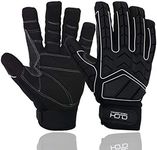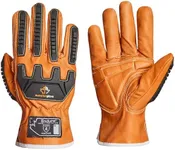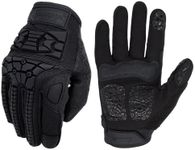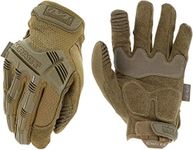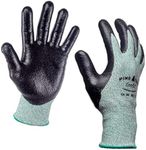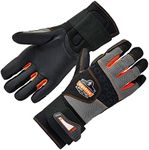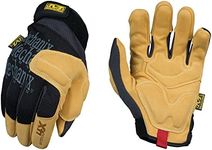Buying Guide for the Best Anti Vibration Gloves
Choosing the right anti-vibration gloves is important if you work with power tools or machinery that produce a lot of vibration. These gloves are designed to reduce the amount of vibration that reaches your hands, which can help prevent fatigue and long-term health issues like Hand-Arm Vibration Syndrome (HAVS). To find the best fit for you, it's important to understand the key features and how they relate to your specific needs and work environment.Vibration Reduction LevelThe vibration reduction level refers to how much the gloves can dampen or absorb vibrations from tools and equipment. This is important because higher vibration exposure can lead to discomfort or even injury over time. Gloves are often rated or tested according to standards that measure their effectiveness. Some gloves are designed for light-duty tasks with minimal vibration, while others are built for heavy-duty use with high-powered tools. If you use tools that generate strong vibrations for long periods, look for gloves with higher vibration reduction ratings. For occasional or lighter use, a lower level may be sufficient.
Material and PaddingThe materials and padding used in anti-vibration gloves play a big role in comfort and protection. Common materials include synthetic leather, rubber, and gel inserts. Thicker padding can absorb more vibration but may reduce dexterity, while thinner padding offers more flexibility but less protection. If your work requires precise hand movements, you might prefer gloves with thinner, more flexible padding. For tasks where maximum protection is needed, thicker padding is better, even if it means sacrificing some dexterity.
Fit and ComfortA good fit is essential for both comfort and effectiveness. Gloves that are too tight can restrict movement and cause discomfort, while loose gloves may not provide adequate protection or grip. Many gloves come in different sizes, so it's important to measure your hand and choose the right size. If you’ll be wearing the gloves for long periods, look for features like breathable fabrics and adjustable wrist closures to enhance comfort.
Grip and DexterityGrip refers to how well you can hold onto tools while wearing the gloves, and dexterity is your ability to move your fingers freely. Some gloves have textured palms or special coatings to improve grip, which is important for safety and control. If your tasks require handling small parts or tools, prioritize gloves that offer good dexterity and grip. For heavier work where grip is less of a concern, you can focus more on vibration protection.
DurabilityDurability is about how well the gloves hold up over time, especially if you use them frequently or in tough conditions. Look for reinforced stitching, high-quality materials, and abrasion-resistant surfaces. If you work in environments where gloves are likely to wear out quickly, choosing a more durable pair will save you from having to replace them often.
Compliance with Safety StandardsSome anti-vibration gloves are tested and certified to meet specific safety standards, which can give you confidence in their performance. These standards may vary by region, but they generally indicate that the gloves have been independently tested for vibration reduction. If your workplace requires compliance or you want extra assurance, check for gloves that meet recognized safety standards.




